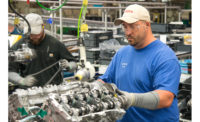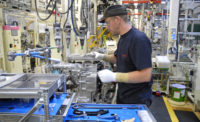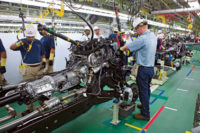In January 2017, Toyota pledged to invest $13 billion in its U.S. operations over five years. On June 30, the company announced it will reach that goal a year early.
The spending spree began in January 2017 with a $600 million investment to modernize the company’s assembly plant in Princeton, IN, and it was capped off, ironically, with an additional $700 million investment to expand that facility in January 2020. Along the way, the automaker pumped hundreds of millions of dollars into assembly plants in Blue Springs, MS; Buffalo, WV; Georgetown, KY; Huntsville, AL; Jackson, TN; Plano, TX; San Antonio; and Troy, MO.
The company also invested $1 billion in the Toyota Research Institute in Ann Arbor, MI, as well as $5.9 billion in supplier tooling, general plant upgrades, and research and development.
“For more than six decades, we have been committed to serving our U.S. customers by investing locally and building cars where we sell them,” says Ted Ogawa, chief executive officer for Toyota Motor North America. “Our commitment to the U.S. market is unwavering, and we are underscoring this point today with the completion of a $13 billion investment and over 6,500 new jobs since 2017.”
Toyota is now well-positioned to meet the aggressive new domestic content requirements set forth in the United States-Mexico-Canada Agreement, which took effect July 1. Toyota has created a vast value chain in North America, with 14 assembly plants—15, if you include its joint venture with Mazda in Alabama. Those plants directly employ more than 47,000 people.
That’s incredible. I remember when the thought of a Japanese carmaker setting up shop in the U.S. was heresy. But, fantasy became fact in November 1982, when Honda rolled the first “Japanese-American” car off an assembly line in Marysville, OH. Just six years later, Toyota, Nissan and Mazda were also operating plants here, and together, the four companies were churning out more than 900,000 cars and trucks annually. It wasn’t long before Mitsubishi, Subaru and Korean OEMs Hyundai and Kia were running plants, here, too.
As much as we’d love U.S. companies to reshore production from overseas, foreign direct investment in the U.S. has been an even greater story. Thank you, Toyota—and to all the Japanese and Korean OEMs and suppliers—for believing in U.S. manufacturing.




